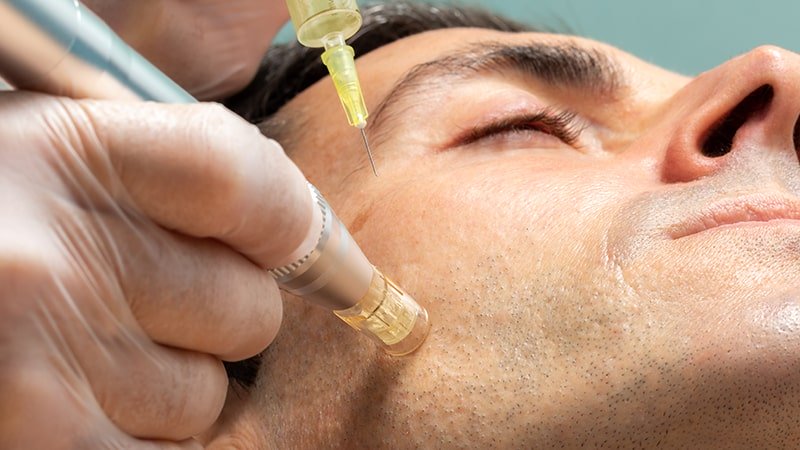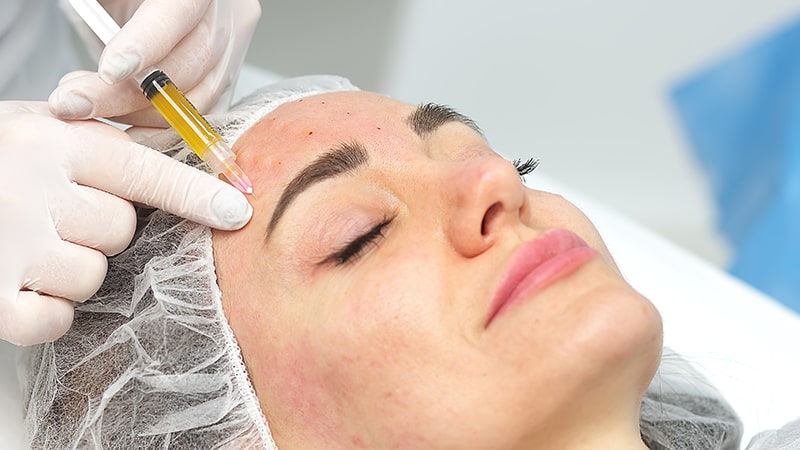Alopecia is a condition that affects both men and women worldwide. For many people, it is an aesthetic problem that can have a significant impact on self-esteem and quality of life.
Hair loss is associated with multiple causes, one of the main ones being androgenetic alopecia.
In men, this condition is related to a genetic predisposition and increased sensitivity to the hormone dihydrotestosterone (DHT), which weakens hair follicles and reduces hair growth in certain areas of the scalp, such as the receding hairline and crown, leading to hair loss in a characteristic M-shaped or crown pattern.
In women, androgenetic alopecia may be linked to hormonal and genetic factors. Although less common than in men, it affects the entire upper scalp area.
Alopecia areata is an autoimmune disease that causes bald patches to appear on the scalp and other areas of the body when the immune system mistakenly attacks the hair follicles.
In addition to genetics and hormones, alopecia can be caused by nutritional deficiencies, stress, systemic diseases, medications, thyroid disorders and medical treatments such as chemotherapy.
Medical-aesthetic treatments for alopecia
Fortunately, aesthetic medicine has advanced considerably, offering a wide range of treatments that can help stop or diminish alopecia. In this article, we will list and describe some of the most effective treatments to address hair loss in both men and women.
Electroporation against alopecia
Electroporation is an aesthetic medicine technique that uses low-intensity electrical currents to improve the penetration of active ingredients into the skin and scalp. During the treatment, electrical pulses are applied that cause the pores of the cells to open temporarily, allowing the absorption of nutrients and medications.
For alopecia, electroporation makes it possible to introduce vitamins, minerals and growth factors directly into the scalp. These ingredients strengthen the hair follicle, stimulate hair growth and improve overall scalp health.
While electroporation is effective in treating most non-scarring alopecia, its efficacy may vary depending on the degree of hair loss and the underlying cause of the problem in both men and women.
It is also effective as a supportive treatment before and after hair grafting. What we are going to achieve in this case is to improve circulation and prepare the recipient area. After the graft we accelerate healing and stimulate the growth of the implanted follicles. Hairactive is the product designed by Sisneo to combat alopecia by electroporation. It is a compound formulated to stop hair loss by improving microcirculation and revitalizing hair follicles.
It is a safe treatment that does not usually have adverse effects. At most, some redness or irritation may be experienced. To enhance the results, transdermal electroporation can be combined with injected mesotherapy.
Radiofrequency against alopecia
Radiofrequency is another medical-aesthetic treatment used against hair loss. This technique uses radiofrequency energy to heat the deep layers of the skin and scalp in a controlled manner.
The heat stimulates the production of collagen and elastin in the skin, which improves blood circulation in the scalp and strengthens the hair follicles. In addition, it can help eliminate bacteria and fungus on the scalp, which can be beneficial for certain types of alopecia.
Used prior to grafting, it can prepare the scalp and improve blood circulation to promote the survival of the transplanted follicles. After grafting, it can accelerate recovery and stimulate the growth of the transplanted hair.
Phototherapy against alopecia
Phototherapy is a treatment that uses different types of light to stimulate cell regeneration and improve scalp health.
Stimulates cellular activity in the scalp and hair follicle. The light is absorbed in the mitochondria of the cells, which triggers a series of biochemical reactions that promote hair growth and increase hair density.
Phototherapy is effective in treating androgenetic alopecia and alopecia areata. Obviously, its effectiveness may vary according to the severity and type of alopecia.
It can also be used as a supportive treatment for hair grafting. Before the procedure, you can improve the quality of the scalp and prepare it for surgery. After engraftment, it can accelerate healing and improve the survival of the transplanted follicles.
People with extreme sensitivity to light or with certain photosensitive diseases should avoid this type of treatment.
Ozone therapy for alopecia
The ozone therapy procedure involves the controlled administration of a mixture of oxygen and ozone to the affected area of the scalp. Ozone, which is a powerful oxidizing agent, has the ability to release oxygen into the blood vessels and surrounding tissues.
By increasing the amount of oxygen in the blood vessels, ozone therapy improves blood circulation in the scalp. The oxygenated blood carries more nutrients and oxygen to the hair follicles, which promotes cell metabolism and stimulates hair growth.
In addition, ozone has antimicrobial and anti-inflammatory properties that can help eliminate bacteria and fungi present on the scalp. By reducing inflammation, ozone therapy can improve the scalp environment and promote hair health.
It can be beneficial in several types of non-scarring alopecia, especially those related to poor blood circulation and lack of oxygenation in the scalp.
In cases of hair grafting, if used prior to the procedure, it can improve blood circulation in the recipient area. If done after grafting, it can accelerate recovery and stimulate the growth of the transplanted hair.
Electroporation, radiofrequency, phototherapy and ozone therapy are viable options to address alopecia in men and women with different types of non-scarring hair loss. In all the treatments mentioned above, the frequency and duration of the treatments will depend on the condition of the person and the severity of the alopecia.






